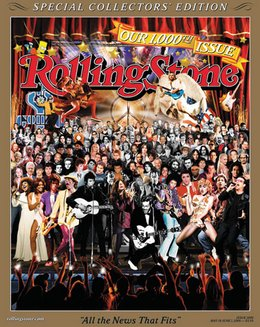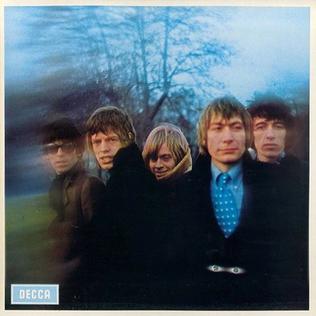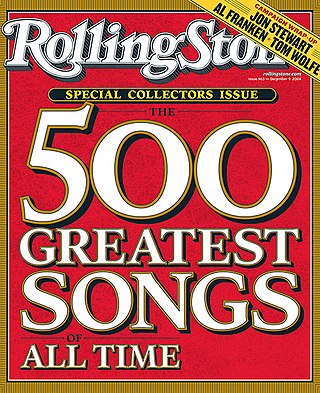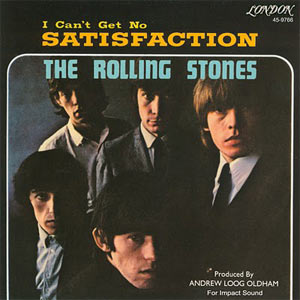Related Research Articles

Rolling Stone is an American monthly magazine that focuses on music, politics, and popular culture. It was founded in San Francisco, California, in 1967 by Jann Wenner, and the music critic Ralph J. Gleason. It was first known for its coverage of rock music and political reporting by Hunter S. Thompson. In the 1990s, the magazine broadened and shifted its focus to a younger readership interested in youth-oriented television shows, film actors, and popular music. It has since returned to its traditional mix of content, including music, entertainment, and politics.

Power, Corruption & Lies is the second studio album by the English rock band New Order, released on 2 May 1983 by Factory Records. The album features more electronic tracks than their 1981 debut Movement, with heavier use of synthesisers. The album was met with widespread acclaim, and has been included in music industry lists of the greatest albums of the 1980s and of all time. The cover artwork was by Peter Saville, and in 2010 it was one of ten classic album covers from British artists commemorated on a UK postage stamp issued by the Royal Mail.

Jann Simon Wenner is an American businessman who is a co-founder of the popular culture magazine Rolling Stone, and former owner of Men's Journal magazine. He participated in the Free Speech Movement while attending the University of California, Berkeley. Wenner, with his mentor Ralph J. Gleason, founded Rolling Stone in 1967.

Let It Bleed is the eighth British and tenth American studio album by the English rock band the Rolling Stones, released 28 November 1969 on London Records in the United States and shortly thereafter by Decca Records in the United Kingdom. Released shortly after the band's 1969 American Tour, it is the follow-up to 1968's Beggars Banquet, and like that album is a return to the group's more blues-oriented approach that was prominent in the pre-Aftermath period of their career. Additional sounds on the album draw influence from gospel, country blues and country rock.

Sticky Fingers is the 9th British and 11th American studio album by the English rock band the Rolling Stones. The Stones released it on 23 April 1971 on their new, and own label Rolling Stones Records. They had been contracted by Decca Records and London Records in the UK and the US since 1963. On this album Mick Taylor made his second full-length appearance on a Rolling Stones album. It was the first studio album without Brian Jones who died two years earlier. The original cover artwork, conceived by Andy Warhol and photographed and designed by members of his art collective, The Factory, showed a picture of a man in tight jeans, and had a working zip that opened to reveal underwear fabric. The cover was expensive to produce and damaged the vinyl record, so the size of the zipper adjustment was made by John Kosh at ABKCO records. Later re-issues featured just the outer photograph of the jeans.

Between the Buttons is the fifth British and seventh American studio album by the English rock band the Rolling Stones, released on 20 January 1967 in the UK and on 11 February in the US. Reflecting the band's brief foray into psychedelia and baroque pop balladry during the era, the album is among their most eclectic works; multi-instrumentalist Brian Jones frequently abandoned his guitar during the sessions in favor of instruments such as organ, marimba, dulcimer, vibraphone, trumpet, and kazoo. Keyboard contributions came from two session players: former Rolling Stones member Ian Stewart and frequent contributor Jack Nitzsche. Between the Buttons would be the last album produced by Andrew Loog Oldham, who had to this point acted as the band's manager and produced all of their albums.

Trouser Press was a rock and roll magazine started in New York in 1974 as a mimeographed fanzine by editor/publisher Ira Robbins, fellow fan of the Who, Dave Schulps, and Karen Rose under the name "Trans-Oceanic Trouser Press". Publication of the magazine ceased in 1984. The unexpired portion of mail subscriptions was completed by Rolling Stone sister publication Record, which itself folded in 1985. Trouser Press has continued to exist in various formats.
"The 500 Greatest Albums of All Time" is a recurring opinion survey and music ranking of the finest albums in history, compiled by the American magazine Rolling Stone. It is based on weighted votes from selected musicians, critics, and industry figures. The first list was published in a special issue of the magazine in 2003 and a related book in 2005.

"The 500 Greatest Songs of All Time" is a recurring survey compiled by the American magazine Rolling Stone. It is based on weighted votes from selected musicians, critics, and industry figures. The first list was published in December 2004 in a special issue of the magazine, issue number 963, a year after the magazine published its list of "The 500 Greatest Albums of All Time". In 2010, Rolling Stone published a revised edition, drawing on the original and a later survey of songs released up until the early 2000s.
The United States cover of Rolling Stone magazine has featured various celebrities. Many are musicians, but politicians, actors, comedians, sports figures, and fictional characters are also sometimes included. The Beatles, as individuals or as the band, have appeared over 30 times. Madonna has appeared on more covers than any other female with a total of 23 times as of 2018, either alone or in a "collage" cover; or dozen alone between 1984 and 2009.

"(I Can't Get No) Satisfaction" is a song recorded by the English rock band the Rolling Stones. A product of Mick Jagger and Keith Richards' songwriting partnership, it features a guitar riff by Richards that opens and drives the song. The riff by Richards is widely considered one of the greatest hooks of all time. The song lyrics refer to sexual frustration and commercialism.
Bondi Digital Publishing is a privately held New York City-based digital media company that specializes in publishing complete digital archives of major consumer magazines.
Rolling Stone Australia is the Australian edition of the United States' Rolling Stone magazine devoted to music, politics, and popular culture, published monthly. The Australian version of Rolling Stone was initially published in 1970 as a supplement in Revolution magazine published by Monash University student Phillip Frazer. It was launched as a fully fledged magazine in 1972 by Frazer and was the longest-surviving international edition of Rolling Stone until its last issue appeared in January 2018.
L.A. Record is an independent music magazine originally published weekly as a broadsheet poster. The poster usually depicts a local Los Angeles musicians and according to the magazine editors is meant to recreate an iconic album cover. In March 2008, it began publishing as a monthly magazine with a poster inside. The magazine is available to the public free of charge at local community spots in Southern California.

Anna-Lou Leibovitz is an American portrait photographer best known for her engaging portraits, particularly of celebrities, which often feature subjects in intimate settings and poses. Leibovitz's Polaroid photo of John Lennon and Yoko Ono, taken five hours before Lennon's murder, is considered one of Rolling Stone magazine's most famous cover photographs. The Library of Congress declared her a Living Legend, and she is the first woman to have a feature exhibition at Washington's National Portrait Gallery.